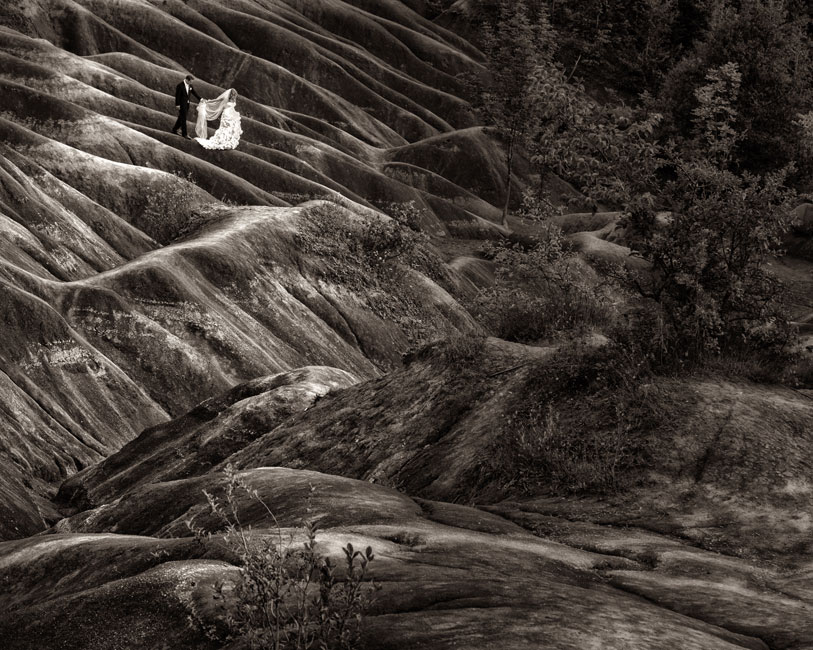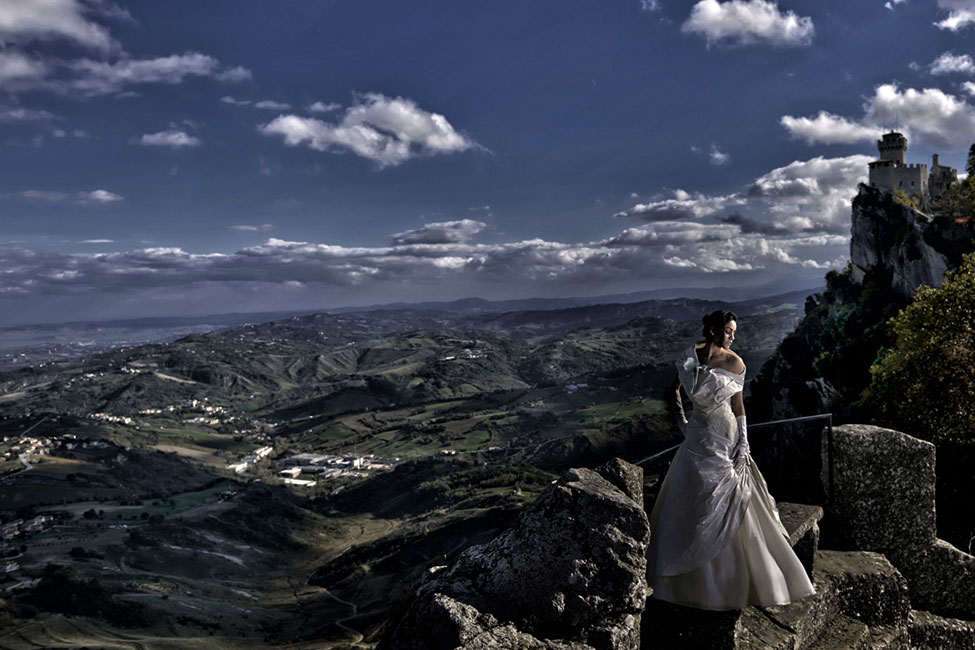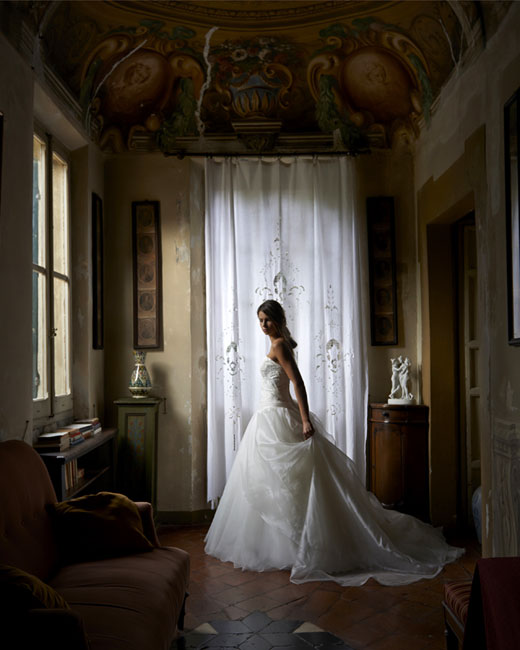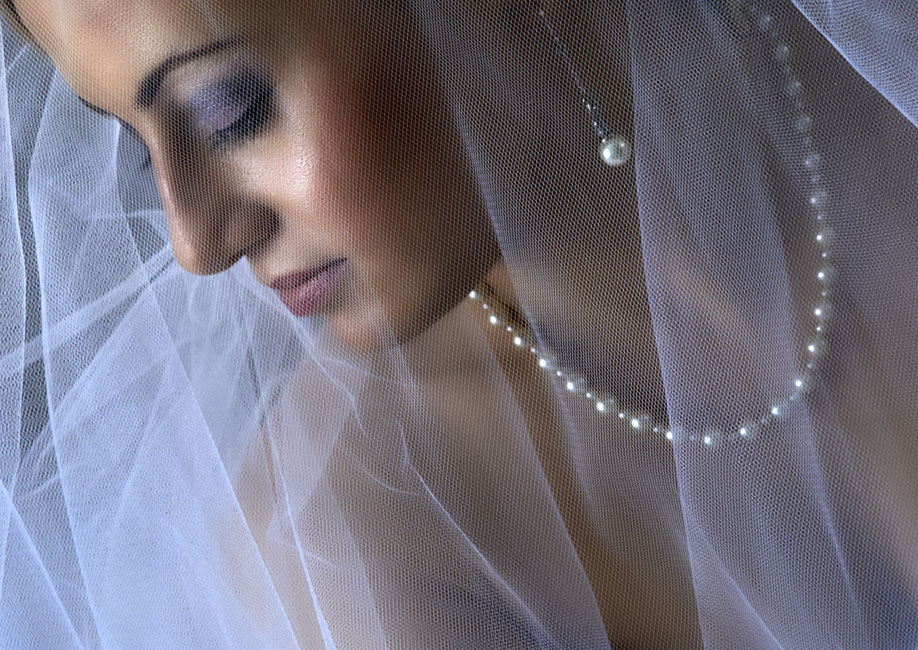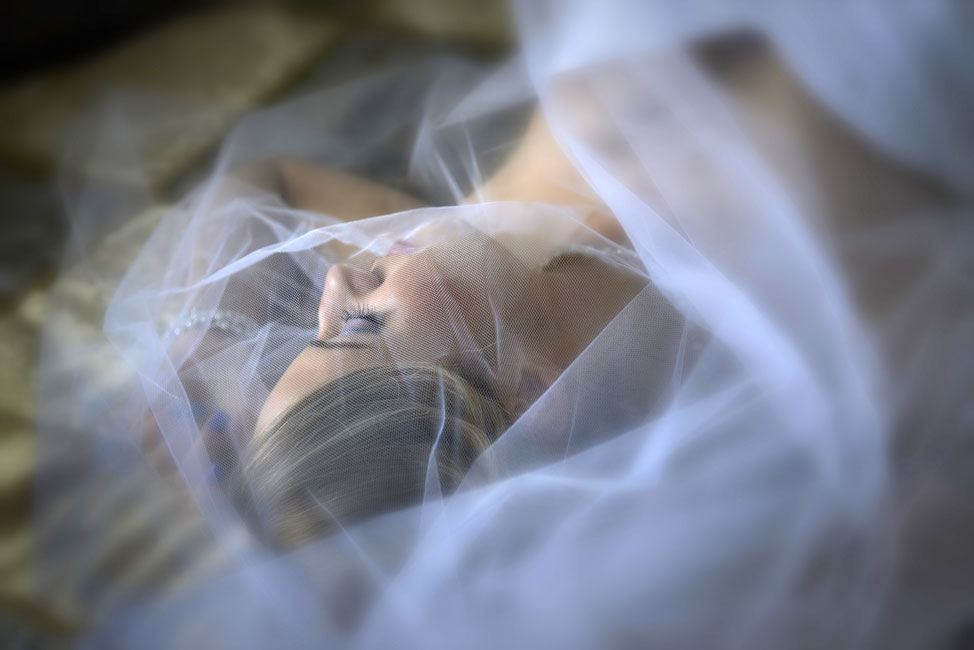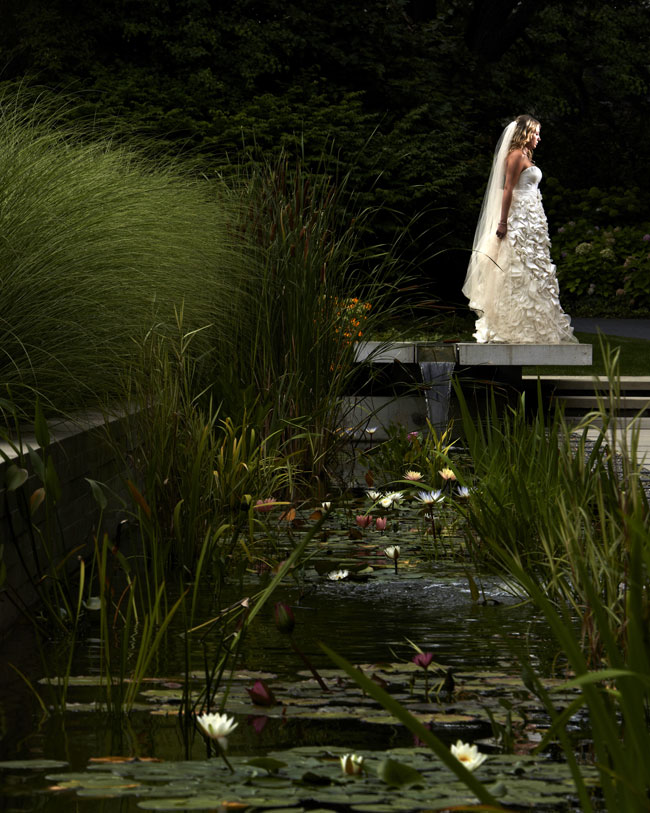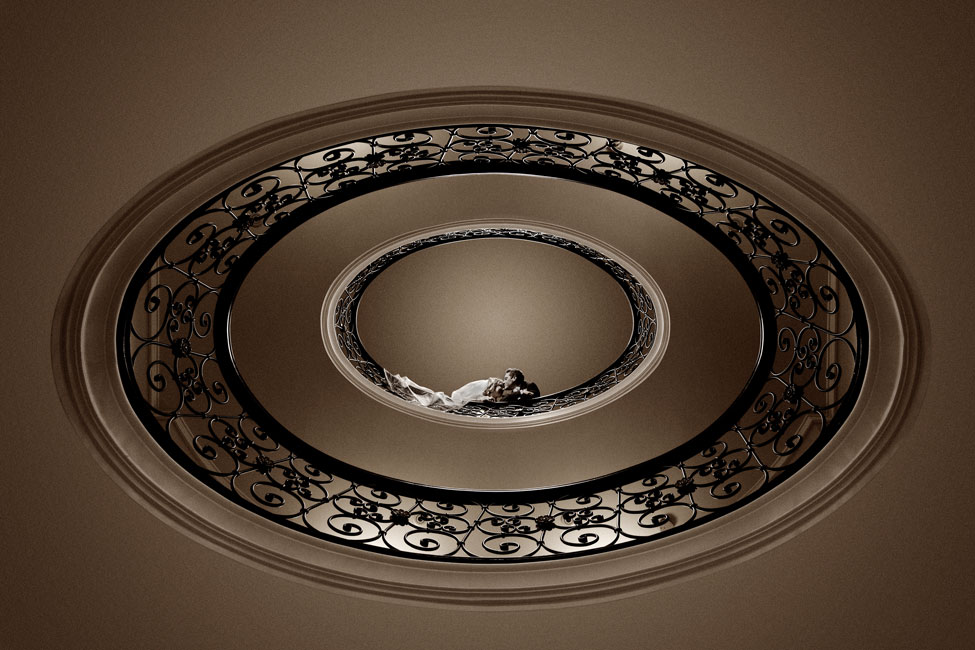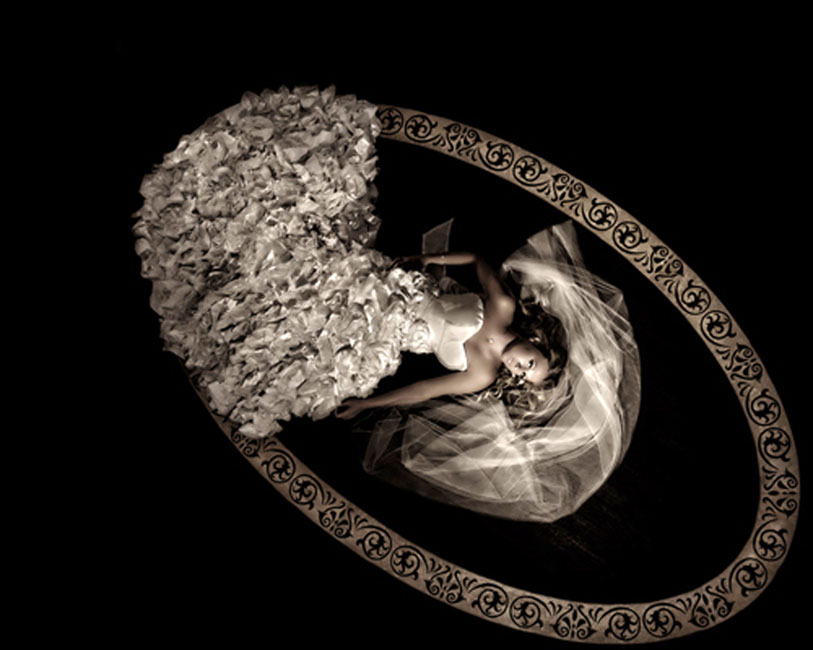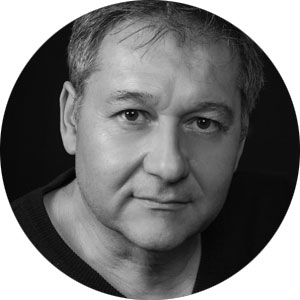Wedding Days: The Fine Art of Brides, Grooms, Light and Location
Take one look at Sam Sciarrino's wedding photography and you're likely to latch onto the essentials of his methods: work the scene, work the light.
But there's more to it than that.
Sam most often lets the scene and the light work for him in order to create images that couples will consider works of art they want to put up on the wall—"timeless pieces," he says, 'that happen to be of brides and grooms; images that won't have a dated feeling, of belonging only to that day or that moment."
Which is not to say that Sam doesn't offer his clients photojournalistic-style wedding imagery; much of his business is based on success with such contemporary photographs. "Not all my clients go for the timeless, dramatic approach," he says, "but I'll shoot it along with the modern style, and very often when they see it, they buy it." He thinks this happens because when couples see samples of the timeless style they don't feel the full effect. "The people in the sample photos aren't them," he says, "but when they see themselves in a timeless piece, they want it."
Light and Location
In Sam's photos, everything comes together around light: where the light's coming from or where, using a Speedlight or a reflector, he can make it come from. "If the light's not there," he says, "I'm going to create it. If its direction's not right, I'm going to redirect it."
Indoors, light's often created with flash, and sometimes it's window light directed by a reflector. Outdoors, flash is the fill light and sunlight, aimed with a reflector, effectively becomes the equivalent of a studio's main light. "My location can be a big, beautiful and dramatic landscape, or it can be a small home with interesting nooks and crannies where a window is throwing a streak of light that I can pose into."
"Pose into" is more than a phrase; it's a concept. Sam always looks for an area within the scene to create his image, an area where he can pose his subjects "into the light."
Another important concept is the use of parts of a scene. Not every locale and location has to be perfect; few are. "I can shoot and crop into the image later," Sam says, "or using the 'nooks and crannies' idea, eliminate sections of the scene. I call it using a mental zoom lens—and It takes time to wire yourself into that idea."
It's pretty much an idea he had a long time ago, but for it to work best he had to wait for technology to catch up. "The D810 produces such quality in a large file size that there's no problem cropping in, and as I'm working that thought is always popping into my mind."
He can easily print his files up to 24x30 inches—"black frame, small signature, classy fine art, clean and timeless. All my clients order framed prints—at least one, and mostly more."
Based in Toronto, Sam has been a professional photographer for more than 25 years. People are his subjects—families, children, engaged couples, brides and grooms—and he applies his "create within the location" methods to all of them.
"I don't automatically accept or reject what's there or isn't there," he says. "I won't let the time of day defeat me, either. The elements don't always line up within the concept of 'good photography conditions,' but that's never stopped me from making a picture."


